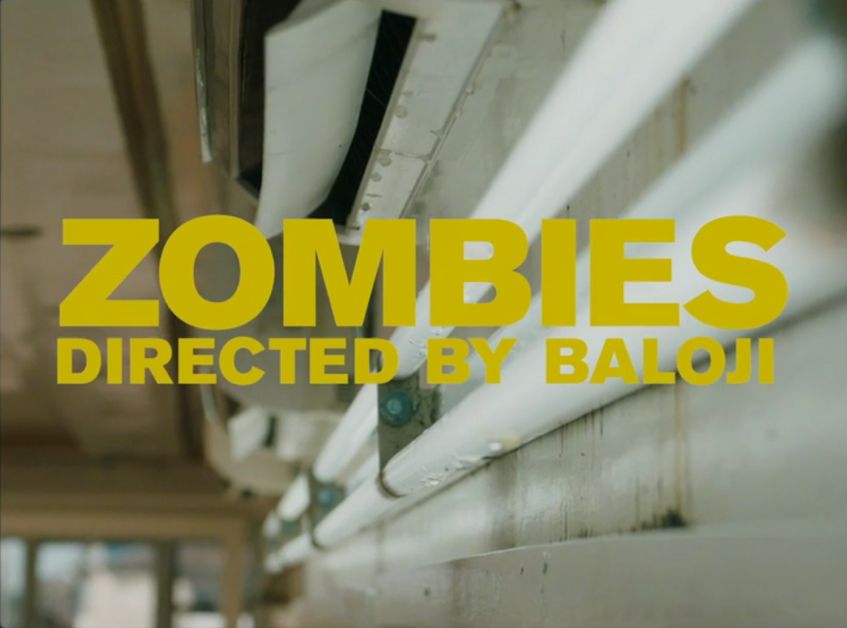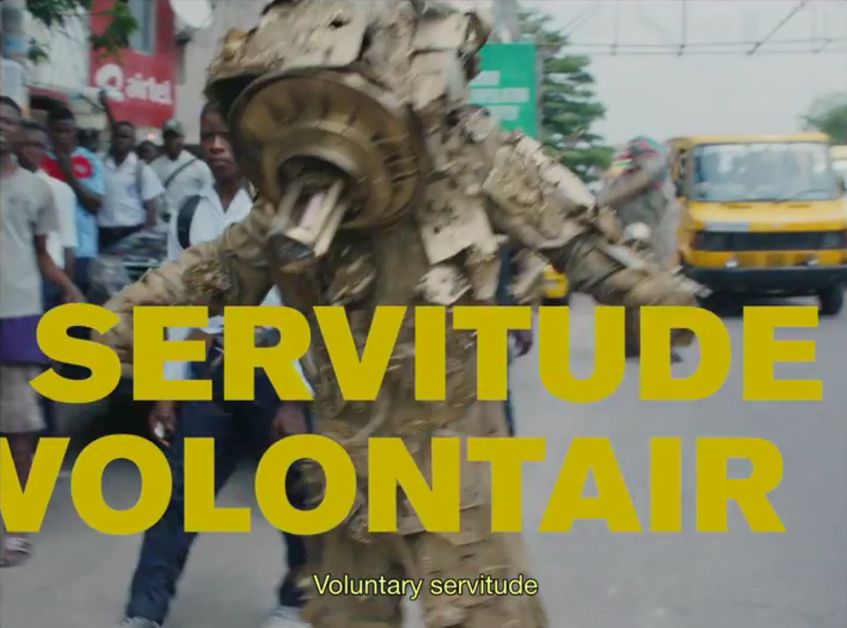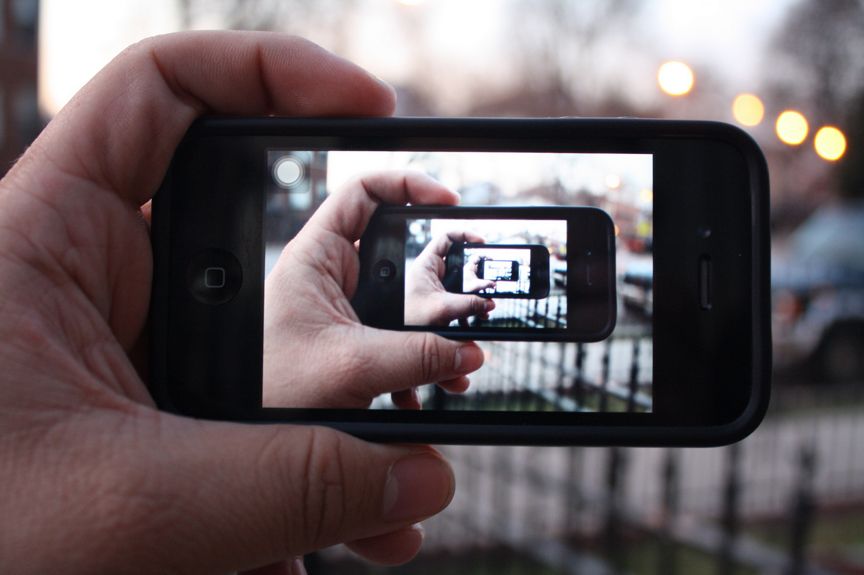AZOLA DAYILE
Notes on Baloji’s ZOMBIES
“The symbolism which debases and demeans blackness and elevates whiteness inevitably affects the consciousness of every black person and every white person, and the consequences are a generated black self-hatred and an exaggerated white narcissism” – Mabogo Percy More
Bemoaning, all at once, the fucked-up-ness of communication-technology ala cellphones and the hyper-exploitation of the Democratic Republic of Congo and its people in furthering this dilemma, Congolese-Belgian musician and filmmaker Baloji has self-directed a kaleidoscopic 14-minute motion-picture titled ZOMBIES.

The short-film, in which he not only directed but wrote, styled and even starred in, is a visual lamentation of the zombifying effects of capitalist modernity – embodied by the cellphone – as a legacy of colonialism. Shot in Congo, the epicentre of Belgian colonialism and plunder that continues to this day, Zombies is a combination of some of the complexities that bedevil modern-day Kinshasa, and indeed most parts of the world, through the capture-of-our-being by colonial-modernity-as-mobile-technology. It opens with a scene of men at a barbershop. One on his cellphone singing and simultaneously getting his hair cut, the other reading the day’s newspaper; one doing the cutting and the other in a yellow mohair jacket standing face-to-face with himself in the mirror, concerned with his aesthetic appearance. He becomes the focal point of the camera, and as such propels the film forward, taking the viewer through the streets of Kinshasa from dusk till dawn, witnessing the industrious everyday lives of Black people in their diverging realities, wielding mobile techno-devices with luminescent screens, collective victims of a nascent coloniality and its ubiquitous nature.
Whether it is adolescent boys on the street settling squabbles through fist-bouts, alley lurkers of the night or nightclubbers dancing past midnight, in the times of smartphones and social media, the moment is not real unless it is snapped, posted, viewed and liked. Such instances of an incessant dependency on mobile technology, and vis-à-vis colonial ways of being and existing in the world, whatever the setting or reality is, is a consistent theme in Baloji’s film. His approach and technique are to infuse his music album, in both its variations, arranging it with the different scenes to make it the soundtrack to the film, a creative way of both showing and telling at the same time. This creates a symbiosis between the visual and the sonic, giving rise to the idea of the visual rhythm that Edmund Husserl categorised as the notion of the Zeitobjekt, or “temporal object”. Malin Wahlberg, in Documentary Time: Film & Phenomenology, notes that this was ascribed to Husserl for how he used melody as a conceptual model for his analysis of the time experience. The music itself has deep historical roots connecting it to the setting and place of the film, coming from the tradition of soukous and rumba music of the late 1950s.
While setting out to perhaps educate first and then entertain, or even both at the same time, Baloji ceases to compromise on his creativity and artistic impulses and this is evident in the how the conceptualisation of the film can also be isolated as itself a work of art. Hardly ever loyal to conventions and a blatant dare-doer, Baloji borrows his cinematographic aesthetic from the old practice of documentary film but subverts it, commanding it to do and communicate exactly what he wishes to convey, both the film as a satirical political critique at anti-Black racism; but also for the film as a work of art to stand for and by itself only as a work of art. As such, to categorise it is a disingenuous and futile exercise in that the film ingeniously oscillates between documentary and fiction film, through its production, how it is exhibited and audience expectation, both imaginative and playful, but also didactic and truthful.

The documentary-yet-playful style of cinematographic form and function by the filmmaker, evinced by the rich colour palette choice and (extreme) close-up shots, that in cinematic/photographic language, suggests familiarity and intimacy, can be read as a complication to the mainstream and “whole” photographic image of Congo as the “dark-hole” of Africa, war torn and poverty stricken, all doom and gloom. The colour suggests that despite the fact of being a zombiefied people and nation, captive to (neo)colonial capitalism, there is still life and colour in Congo, music and a people who dance despite the circumstances. This is as was done by fellow Congolese filmmaker Ngangura Mweze with his second film Kin-Kiesse ou les joies douces-amères de Kinshasa-la-belle, where the filmmaker notes that with the film, his attempt was to depict the DRC in its truthful entirety, beyond the colonial gaze. He notes: “It is a film in which I showed how I see Kinshasa, and I chose to make it entertaining and to show the capital city by filming contrasts in the joys of the young and old, rich and poor, white and black who live there.” Baloji’s usage of the camera, colour and music are what gives his film the entertaining element that Mweze speaks of here.

Another noticeable motif in Baloji’s film is that of hair. The preoccupations here are questions around notions of beauty and how (Black) people see and think of themselves. Playing on this idea in the film, there is a scene where a young Black woman wearing a red dress rushes through the busy streets of the city of Kinshasa to a peri-urban location where her place of employment – a hair salon – is situated. The interesting part about this scene is when the woman strips herself of her weave, revealing her natural hair, and undressing herself, putting on instead a yellow t-shirt with the inscription “has left the group”, a message that usually pops up on the social networking site WhatsApp when a member either ejects themselves out of a group or gets booted out by a person with the requisite administrative powers. Once inside the salon, there is a generational difference of opinion between two women, one suggesting that to be beautiful and attractive, one must straighten their hair while the younger one maintains that for her, her natural hair guarantees the only validation she seeks, three thousand likes on Facebook, the eyes of the true beholder in an era of commodified blackness.

In the penultimate scene of the film, Baloji introduces a figure by the name of Papa Bob who is touted by the crowd through placards as the incoming president of the country, only for him to fail to live up to the promise. This has reverberations of the promises that came with the “formal” end to colonialism and the birth of a postcolonial reality. However, even with the marking of a new era, colonialism survives and rears its ugly face as neocolonialism under the leadership of the nationalist government, plunging the country into further obscurity. The conquest and plunder of Congo for its labour and minerals that make it possible for mobile devices to exist gives credence to this elaboration. Even with personal riches, Papa Bob dies, and his lifeless body is dumped on the rubbish-heap that symbolizes a country in crisis.
The film closes off with an autocritique by the filmmaker, where they are using that which is under critique (the masters’ tools) to communicate their message via texting the names of the contributors to the creation of the film in lieu of the appearance of orthodox film credits.

The fact of the omnipresence of the god-like internet that never sleeps, always there at every moment sucking the people face-first into a world of techno-dependence is testament to the shrinkage of space and the blurred line between the public and the private. And what makes this possible is the continuing plunder of the Congo for cobalt to create these devices, leaving the country, as shown in one scene of the film, a wasteland, with even the creatures of the deep-sea underbelly exposed.
Soon, the real world will only be accessible through the screen of a cellphone.
